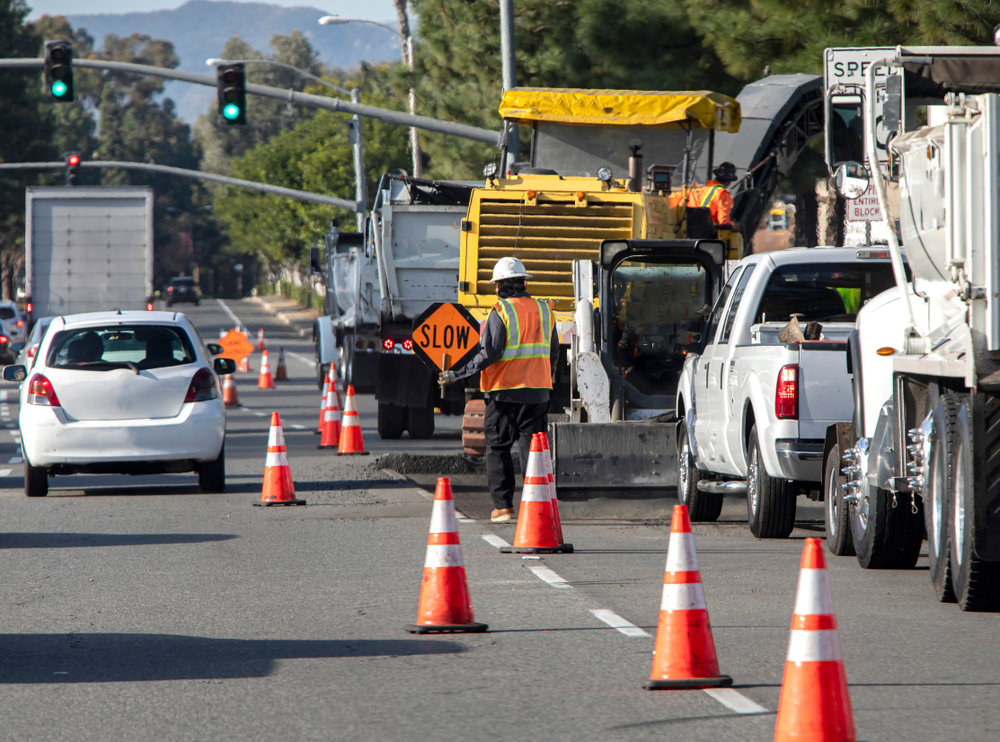
Smart Work Zone Systems are made to increase safety and mobility in construction zones while lowering accident, traffic, and delay rates. In 2023, several Smart Work Zone technologies will have contributed to accomplishing these objectives. This article will provide an overview of these7 technologies.
Automated Flagging Assistance Devices (AFADs)
AFADs are a type of automated flagging system that is used to direct traffic through a work zone. Benefits of AFADs include improved safety for workers and drivers, reduced labor costs, and improved traffic flow. Examples of AFADs include the Flagger-Mac Automated Flagger.
Queue Warning Systems (QWS)
Queue Warning Systems (QWS) is an essential Smart Work Zone Systems component. They are designed to provide advanced warning to drivers approaching work zones, alerting them to congestion and queue conditions ahead. QWS uses sensors and algorithms to detect traffic volume, speed, and flow changes, providing real-time information to drivers via electronic signs. By alerting drivers to work zone conditions ahead, QWS can reduce the likelihood of accidents, improve safety for workers and drivers, and reduce delays and congestion.
Variable Message Signs (VMS)
VMS are electronic signs that give drivers real-time information on traffic conditions, speed limits, and other important messages. They can alert drivers of work zone activity, road closures, and other hazards. VMS is versatile and can be tailored to the unique needs of each work zone. They can display various messages and graphics, including text, symbols, and images.
Automated Speed Enforcement (ASE)
ASE systems are designed to enforce speed limits in work zones. They use sensors and cameras to detect speeding vehicles and issue citations automatically. Benefits of ASE include improved safety for workers and drivers, reduced speed-related accidents, and improved compliance with speed limits.
Travel Time and Delay Monitoring
Systems for tracking travel times, delays, and traffic jams in construction zones are intended to give real-time updates on these factors. They can be applied to pinpoint trouble spots and modify traffic flow accordingly. Improved safety, fewer delays, and better traffic flow are all advantages of travel time and delay monitoring systems.
Travel Time and Alternate Routes
Systems that display travel times and alternative routes are intended to give drivers access to this information in real-time. They can reroute traffic away from construction zones and ease traffic congestion. Increased safety, shorter wait times, and smoother traffic flow are advantages of a system like travel time and alternate routes.
Dynamic Lane Merge
Dynamic Lane Merge systems are designed to manage traffic flow in work zones where lanes are closed or reduced. They are designed to manage traffic flow in work zones where lanes are closed or reduced. DLM uses sensors and VMS signs to guide drivers through the merge process, reducing congestion and improving safety. This smart work zone system can guide drivers through a merge process, provide real-time information on traffic conditions, and adjust signals based on traffic flow.
Revolutionizing Work Zone Safety
Smart work zone technologies have revolutionized how work zones are managed and operated. By leveraging the power of technology, organizations can now create safer and more efficient work zones for workers and drivers alike.
Additionally, implementing smart work zone technologies has led to significant benefits. By providing real-time information to drivers, these technologies can reduce the likelihood of accidents, improve safety for workers and drivers, and reduce delays and congestion. They can also improve traffic flow by guiding drivers to take alternate routes or adjust their speeds accordingly. Furthermore, smart work zone technologies can reduce the need for human labor, which can help to reduce costs and improve efficiency.
Invest in the Future of Work Zone Safety
The importance of smart work zone systems cannot be overstated. Investing in the future of work zone safety means taking steps to improve the safety and efficiency of work zones. By partnering with Worksafe Traffic Control Industries, organizations can access the latest Smart Work Zone technologies and benefit from their expertise and experience.
Worksafe Traffic Control Industries offers a range of products and services designed to improve work zone safety. Their solutions are tailored to meet the specific needs of each work zone, ensuring maximum effectiveness and efficiency. In addition, their signs are certified to meet MUTCD standards. Contact us today to learn more and make the move toward a more secure and productive workplace.

